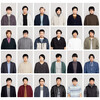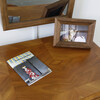Sommersemester 2020, BA/MA Visuelle Kommunikation VK_Startseite
ℳ · Familie suchen, 2020
As with my Bachelors thesis project, I decided to continue to focus on the topic of families for my Masters. I wanted to continue exploring this intricate, enigmatic, and not easily categorizable societal structure that is the family. I, for one, I had always kept my distance from this topic; I believe this is the reason why I am now working on this project—to finally confront the subject I had always avoided and averted my eyes from. It was discussed on TV, in magazines—everywhere I turned, a trend called “konkatsu” was being preached with such fervor that seemed to imply that not getting married would make you a loser in society. So what exactly is konkatsu? Konkatsu is the proactive partaking in matchmaking activities with the intention of getting married. Konkatsu primarily consists of participating in matchmaking parties and speed-dating events or registering with marriage agencies and online konkatsu sites. For my project, I photographed myself portraying more than 60 men that I had met at konkatsu parties. In doing this, I very much had Roland Barthes’ “four image-repertoires” of portrait photography in mind: “The portrait-photograph is a closed field of forces. Four image- repertoires intersect here, oppose and distort each other. In front of the lens, I am at the same time: the one I think I am, the one I want others to think I am, the one the photographer thinks I am, and the one he makes use of to exhibit his art. In other words,
a strange action: I do not stop imitating myself, and because of this, each time I am (or let myself be) photographed, I invariably suffer from a sensation of inauthenticity, sometimes of imposture (comparable to certain nightmares).” Playing all the roles and doing the shooting myself meant that there is no fragmentation of my four image- repretoires—the men I was portraying. In other words, I felt I was able to fulfill my desire of being seen in a certain way by recreating the men that I had met as closely as possible. My interest was spurred further by various studies, such as sociologist Charles Cooley’s theory of the “looking-glass self”, in which one understands oneself through the perception that others hold of them. Based on this, I have decided to place the monitor behind a one-way mirror, so that the viewer, without realizing that they are sitting in front of a monitor, is forced first to look at their own reflection before the images are displayed. Also, the fact that early photographs formed on mirror-like silver-coated plates were called “mirrors with a memory” was another reason for my fascination with the mirror.

Bitte Lizenz eintragen!
Keine Lizenz

Bitte Lizenz eintragen!
Keine Lizenz

Bitte Lizenz eintragen!
Keine Lizenz

Bitte Lizenz eintragen!
Keine Lizenz

Bitte Lizenz eintragen!
Keine Lizenz

Bitte Lizenz eintragen!
Keine Lizenz

Bitte Lizenz eintragen!
Keine Lizenz